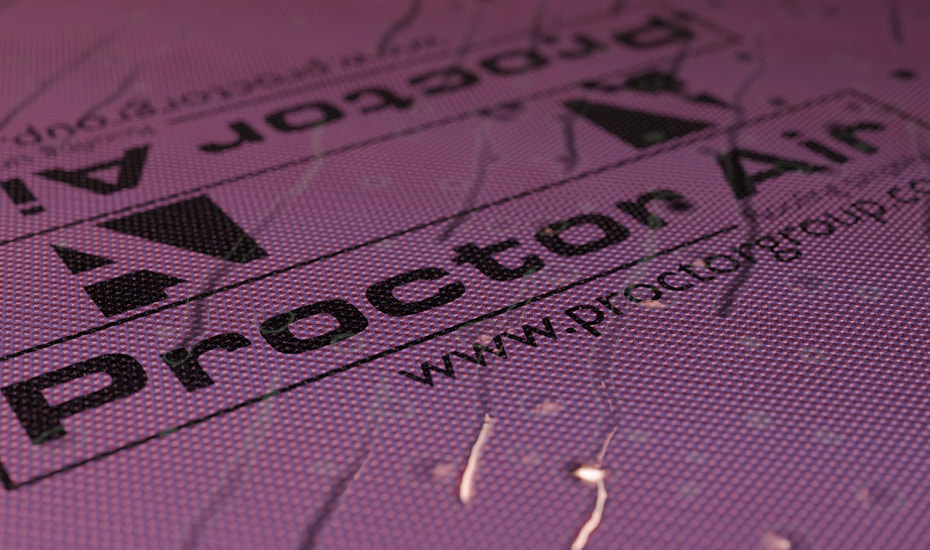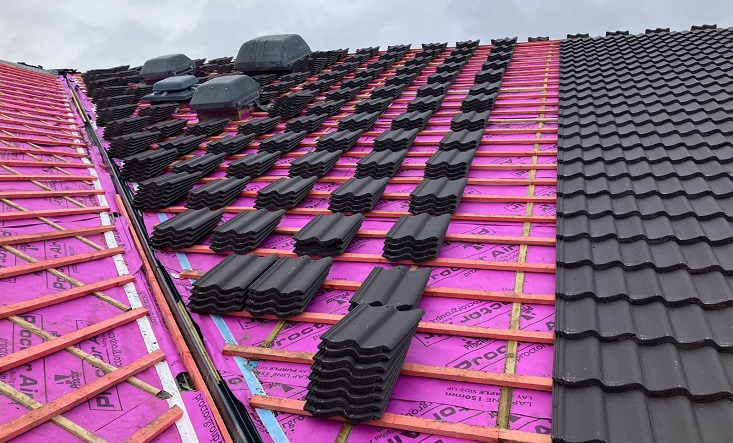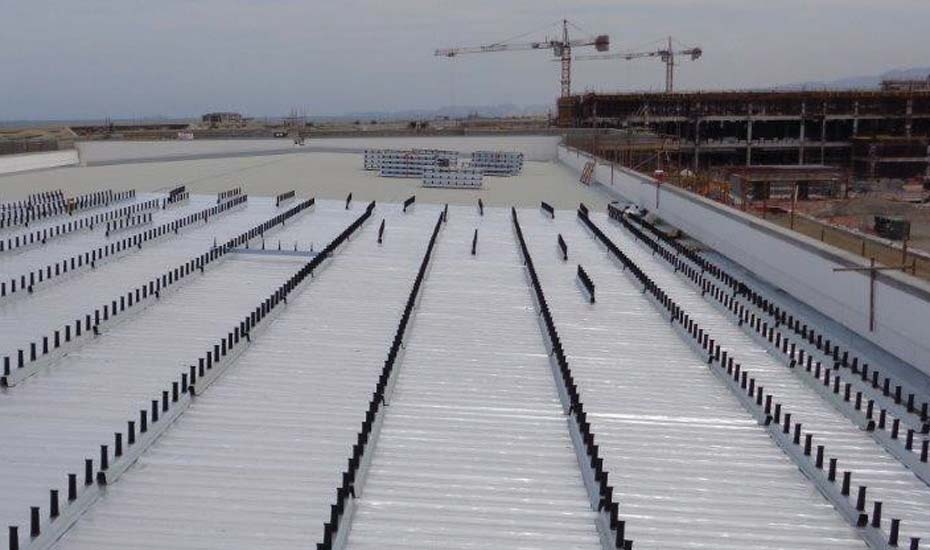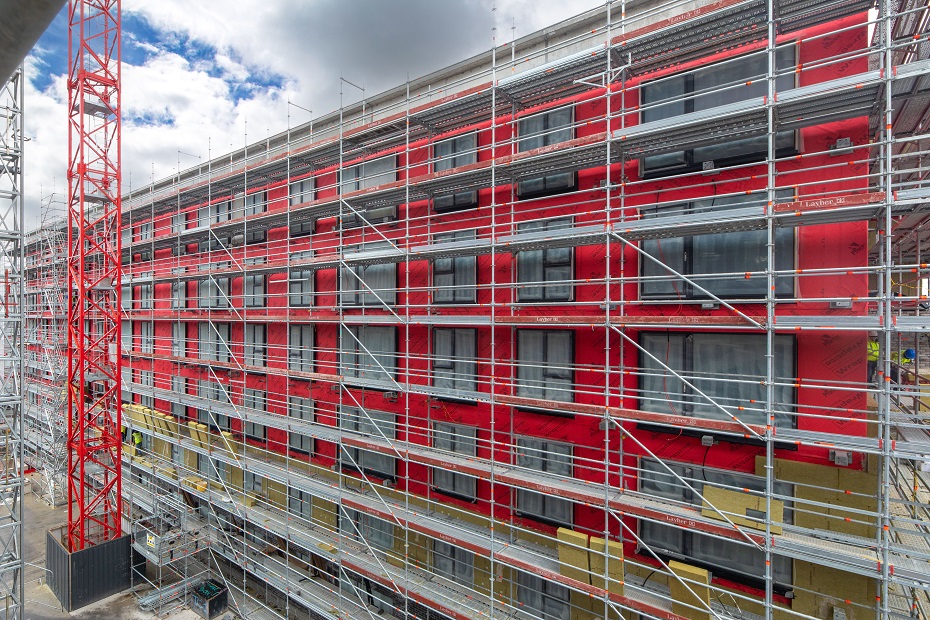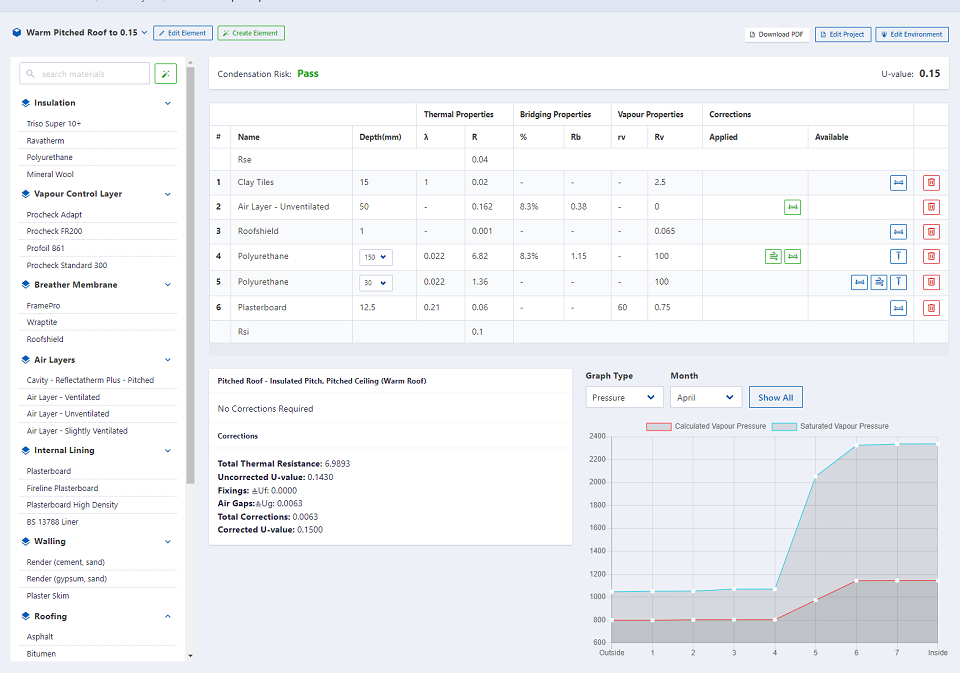Pitched roof underlays are often described using the catch-all term ‘breather membranes’. The generic description doesn’t reflect the distinction between high-resistance (HR) and low-resistance (LR) membranes. And LR membranes themselves can be air tight or air permeable.
Roofing membranes must meet a host of performance criteria, of which we’re going to focus on two: water resistance and vapour/air permeability.
Water resistance of membranes in a changing climate
When a roofing system is installed, there is an inevitable period of time where the underlay will be in place without a roof covering to protect it. The underlay might therefore have to bear the brunt of any inclement weather. Good practice will dictate that this period should however be kept to a minimum and a temporary cover used if rain is expected.
The NFRC’s Technical Bulletin TB06 describes how membranes should perform in terms of water resistance. It says an underlay with “a water hold out over 1m when tested to BS EN 20811 will be adequate.”
As the frequency and intensity of extreme weather increases as a result of the changing climate, roof systems generally – and membranes as a specific part of those systems – need to be capable of withstanding more severe levels of rainfall.
An underlay’s ability to perform with a 1m head of water is a minimum level of performance to look for during product selection.
Designing roof membranes to cope with modern living
Any manufacturer developing a pitched roof underlay must balance the competing needs of resisting the external elements, and contributing to the quality of the building’s indoor environment.
Water resistance on the external side must not impact on the vapour permeability – or air and vapour permeability, if both are offered – from the internal side.
Ventilation in modern buildings, and especially dwellings, is often not well aligned with the energy efficiency performance (including airtightness). With more people adopting hybrid working and spending more time at home, excessive levels of moisture vapour in the air are increasingly common.
Selecting an air permeable LR underlay can mean that no vapour control layer (VCL) is required in the ceiling. It’s also unnecessary to ensure that ceilings are constructed as ‘well-sealed’, as described in BS 9250, however the ceiling should be convection tight. Moist air passes into the roof space and, in quick succession, to the outside air.
Proctor Air: an air permeable LR membrane for the future
With these competing challenges in mind, A. Proctor Group has developed a pitched roof underlay for the future: Proctor Air.
As an air permeable LR underlay, Proctor Air makes pitched roof constructions simpler. No VCL is required in the ceiling, which also does not need to be well-sealed. And no ventilation measures are required in the cold roof space, since the membrane permits the passage of both air and moisture vapour through the roof construction.
In fact, Proctor Air provides a more uniform flow of air than normal vents. This is particularly useful in complex roofs, where ‘dead’ areas of poor ventilation can occur even when ventilation measures have been installed well.
Keeping with the theme of future-proofing, avoiding the need for ventilation – particularly at the eaves – helps when it comes to installing the substantial thicknesses of insulation required in lofts. With the impending introduction of the Future Homes and Building Standards to consider as well, those thicknesses may well increase.
Knowing that insulation can be installed right into the eaves with no risk of blocking ventilation is reassuring from a building performance point of view, and from the point of view of avoiding condensation in the roof space.
A true ‘fit and forget’ product
Hidden from view, pitched roof underlays usually warrant little attention from building users. Yet they play a vital role in protecting those same users from the elements, and from unhealthy indoor climates.
A. Proctor Group is a 4th generation family business with a history of technical innovation, promoting good practice, and developing products that roofing contractors want to use. We have applied this wealth of experience to creating the next generation of air permeable LR membrane.
By choosing and installing Proctor Air, specifiers, contractors and building owners/managers can enjoy the confidence that comes from a high-performance product doing its job without intervention.
Proctor Air’s water resistance has been tested and meets the guidance of TB06. At the same time, it reduces the risk of issues occurring in roof spaces due to poorly installed VCLs or ventilation, since neither is needed.
All of this is backed by our unique 15-year warranty, offering peace of mind even in the face of an uncertain future climate.
For more information visit: Proctor Air®
